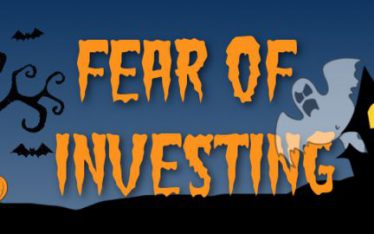The concept of two people with a Bloomberg in a garage starting a fund has long faded from reality to become a mere figment of our imagination. With increased barriers to entry resulting from emphasis on transparency, infrastructure, focus on reputational risk, the reality is very different today versus 10 years ago. Today, we see numerous new fund ideas being launched, with muted growth trajectory.
What does the next generation of fund managers look like? And what is their path to success?
Emerging managers start off in the lower left quadrant, and the ones who put up solid performance numbers may attract allocations from investors who are willing to take business risk and /or have managed account capabilities. Once managers build up their back office and resources in general, they are viewed as strong in both operational and investment areas. These are the coveted “Unicorns” or “superstars”, the sweet spot in manager selection. However, as AUM grows substantially, select managers can go through growing pains which leads to under-performance, causing their relative investment strength to decline.
One-shot venture financing, multiple paths
Most fund managers these days need a minimum and stable capital base or operational funding to get to the next stage. The initial seed investment / founders class investment or working capital line usually comes in exchange of one or more of the following:
- Fee discount
- Ownership interest with or without a sunset provision
However, even though this initial support gets them started, the biggest handicap in the industry is that it’s a one-shot deal. This is different from traditional startups in the following ways:
- Traditional startups start with friends and family, move to seed stage and then get Series A / B / C rounds. They receive different valuations at each stage, along with investors with different risk profiles and resources to support growth and strategy at each stage.
- In contrast, funds don’t have this luxury. Financing is a one shot deal, without progressive rounds of funding. If they make it past the “valley of death”, there are firms that provide exit opportunities and help take the manager to the next level of growth.
Necessity, why is it not spurring invention?
New risks and complexities: The evaluation process for early stage managers is less structured and repeatable as risks can be very different from Manager A to Manager B. However, certain factors bubble up, and performance still remains the dominant metric, as it’s an equalizer. However, the biggest challenge with performance is that it’s difficult to confirm ownership of the track record or its’ validity especially for prop traders where the numerator (revenue) is usually a known factor, but denominator (capital base) is an unknown. Plus the intangibles of access to intelligence as part of a platform, or the psychological impact of managing a fixed capital base is unknown.
Too small to matter: It is not easy for most institutional investors to make a direct commitment to emerging managers. The performance impact is too small as a percent of their portfolio, and it is just not viable to devote underwriting and monitoring bandwidth. For example, a $50mm seed generates a 25bps allocation for a $20bn investor. Over-diversification?
Limited exits: The traditional startup exit concept is not widely adopted in the investment industry. We can count (on one hand?) the number of buyouts or exits that have occurred in the industry. The exit comes in the form of sunset provisions few years later or sometimes the relationship becomes perpetual.
Fragmented industry: The investment management industry is fragmented, with no common platform to match buyers and sellers. There are a few platforms that are starting to address this need, but they are still very much in their infancy. There is a huge place for further innovation to narrow the gap between buyers and sellers.
Markets as an uncertainty factor: Once a traditional startup is successful in understanding its clients and has a great management team in place, their growth trajectory is usually well understood, and the number of unknowns decline. With fund management, markets become a much bigger unknown variable, generally taking years to give investors comfort in their ability to consistently deliver performance.
So yes, early stage investors are sparse, and these factors result in a chicken or the egg problem. Which comes first, successful track record or assets?
Assets won’t be allocated to an emerging fund without a performance track record, but how does the track record come without enough assets to sustain the team?
The need for evolution in the market structure
Barriers to entry in starting a fund created by the need for institutionalization and regulation are real. However, there’s no denying the need to change the status quo.
A fundamental re-think of market structure for fund investing is needed.
Create boundaries: One area of re-framing the current approach could be in creating a new ecosystem where investors in emerging managers are clearly defining their area of focus. Currently, the lines are amorphous, and as a result, managers don’t have focus on which investor(s) to approach for an allocation.
Multi-step ladder (similar to traditional startups): Another area that could be reworked is the actual structure of the funding from a one-shot to a staggered approach, similar to the traditional startup community. For example, one group of investors writes checks to unproven managers, taking 20% in the GP. As the fund manager grows, subject to certain thresholds, these investors will be willing to reduce their stake. This paves the way for new investors to come in who would support the manager through the next wave of growth. Staggering eventually provides an avenue for the first investor to exit.
Risk and return tranching (equity, mezz, senior): A final idea is to create investment structures that offer multiple tranches defined by the stage of investment managers. For example, the equity tranche includes exposure to manager incubation. The mezz tranche is exposed to seeding managers with successful 1-3 years and the senior tranche can be managers that are past the initial time and AUM thresholds are looking for growth partnerships.
Overall, changing the paradigm of investment fund startups is key to reducing barriers to entry, allow for a more efficient allocation of capital across this investment strategy, and ease some of the pains of asset management entrepreneurship.
Originally published on Hedgeconnection



